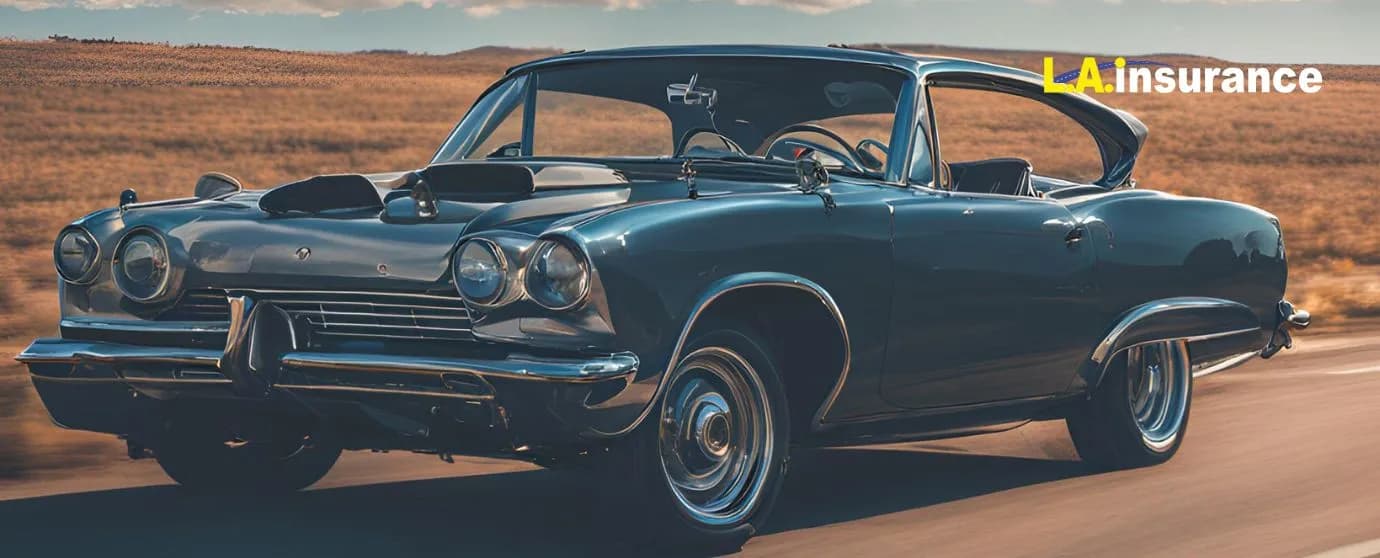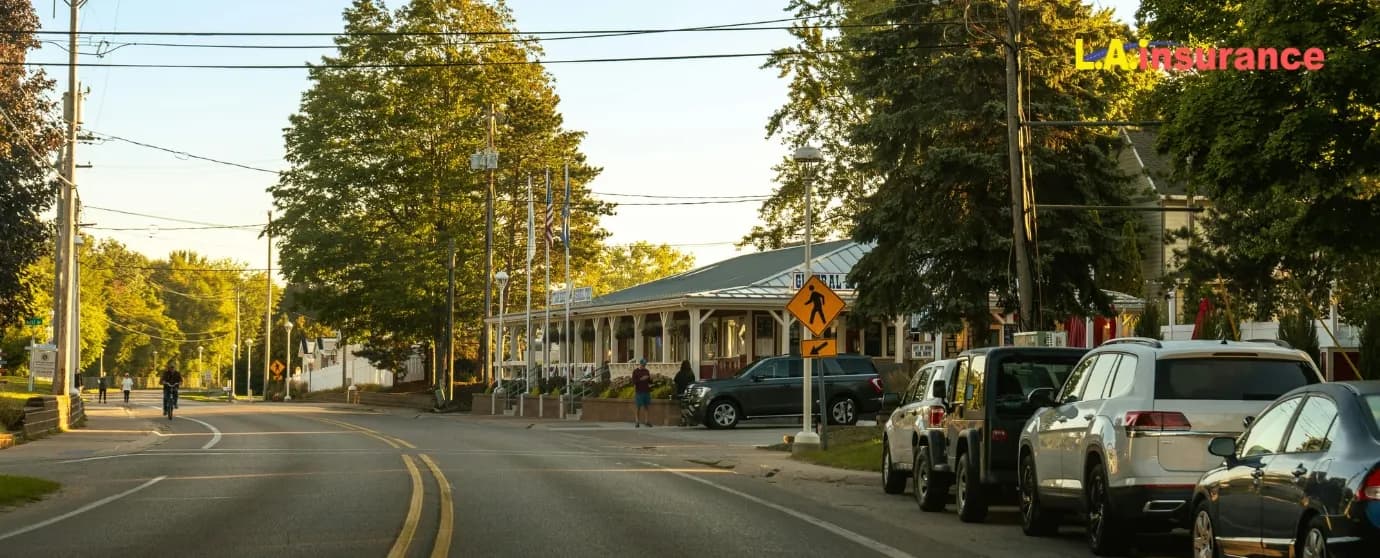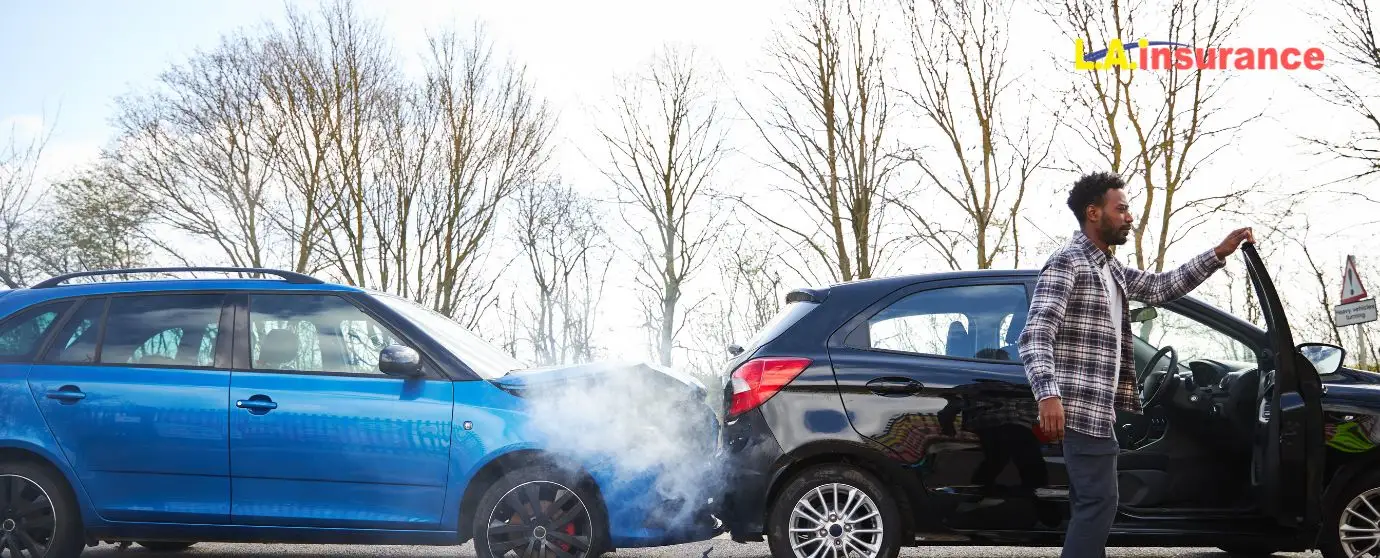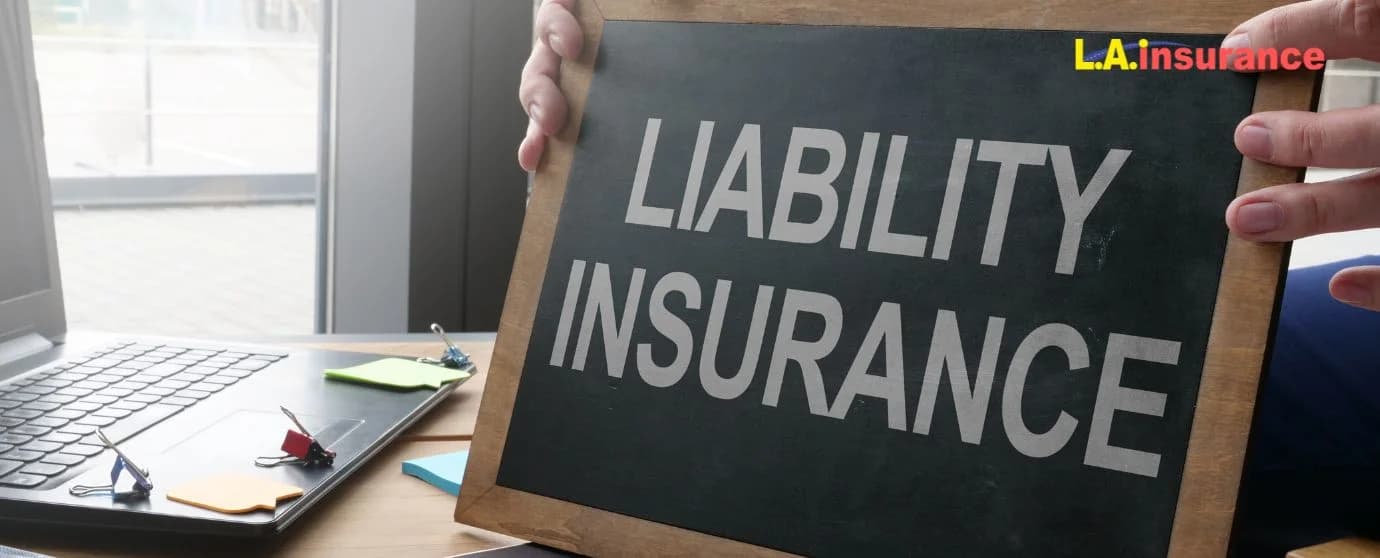
Publish Date: 01-02-2025
Auto Insurance
Last Updated: 10-04-2025
How Make and Model Affect Car Insurance Rates?
Your car’s make and model have a huge impact on your insurance rate. If you purchase a luxury car, it will lead to costly repairs, so the insurance price will be higher. Also, the frequency of claim history for the specific make and model, auto repair/replacement costs, and safety features determine the insurance rate. For instance, insuring a luxury car like the BMW 330i can cost between $2,500 and $3,214 annually, while a more affordable vehicle like the Subaru Outback averages $2,175. Keep reading the article to learn how “make and model” affect your auto insurance rate and the auto insurance rates by make and model in 2025.
Key Takeaways:
- Sports cars and luxury vehicles, like the Audi R8, averaging $6,120 annually.
- Affordable cars like the Honda CR-V and Subaru Forester, averaging under $2,200.
- SUVs and trucks are generally cheaper, with premiums around $2,000 to $2,400 annually.
- Safety ratings, theft rate, repair costs, and usage patterns heavily influence premiums.
- Comparing quotes and choosing cars with better safety ratings can lower insurance expenses.
What Do ‘Make’ and ‘Model’ Mean?
The terms “make” and mode” often confuse car buyers. But it’s not that difficult to understand.
A car’s make refers to the brand or manufacturer, like Toyota, Honda, or Ford. The model describes the specific version of the vehicle, like a Toyota Corolla or a Ford Mustang.
Each make can have several models designed for different needs. For instance, Honda produces the Civic, Accord, and CR-V. For example, Honda makes the Civic for compact car buyers and the CR-V for SUV lovers.
Many models come in various body styles. You can easily find your desired car if you are well aware of these styles. Here are the most common body styles:
- Coupes: Sleek, sporty cars with two doors and a fixed roof.
- Convertibles: Like coupes, but with a retractable roof for open-air-driving.
- Sedans: Four-door cars with a separate trunk, perfect for families.
- Hatchbacks: Compact cars with a rear hatch that opens to cargo space.
- SUVs: Larger vehicles with improved seating and plenty of storage space.
- Crossovers: Smaller, car-like SUVs built for comfort and light utility.
- Minivans: Spacious vehicles with sliding doors and three rows of seats for families.
- Sports Cars: Compact, high-performance cars designed for speed and agility.
- Pickup Trucks: Vehicles with a passenger cab and an open cargo.
- Wagons: Cars combining sedan-like driving and additional cargo space, often with a longer roofline.
Models can also come with variations, known as trim levels. Trim levels add features like better engines or upgraded interiors. If you go for higher trims, this means they will increase the car’s costs as well as your insurance rate.
Factors Influencing Higher Insurance Costs for Certain Vehicles
Car insurance costs vary significantly, and some vehicles are consistently more expensive to insure. This happens because insurers analyze risks and potential claim expenses. Several factors contribute to higher insurance costs for certain cars.
Firstly, body style plays an important role. If you choose sporty cars or convertibles, they will cost more to insure. Because they are associated with faster speeds and riskier driving behavior. For instance, sports cars like the Dodge Challenger demand higher premiums due to frequent high-speed usage.
Secondly, repair costs heavily influence premiums. Luxury cars, such as the Audi R8, have expensive parts and advanced technology which make repair costly. Also, vehicles with specialty or imported parts are harder to fix and further increase repair expenses.
Moreover, safety ratings can determine rates. If you’re driving a car with lower safety ratings, you’re more likely to incur severe damage during accidents. This leads to higher claim payouts. Conversely, vehicles with robust safety features such as lane assist or automatic braking may receive discounts but remain expensive to repair, balancing out costs.
Last year, the Insurance Institute for Highway Safety (IIHS) recognized some of these cars as the top safety picks:
- Small Cars: 2024 Acura Integra, 2025 Honda Civic 4-door hatchback, 2025 Honda Civic 4-door sedan, 2024-25 Hyundai Elantra 4-door sedan, 2025 Kia K4
- Midsize Cars: 2024-25 Honda Accord 4-door sedan, 2024 Hyundai Ioniq 6 4-door sedan, 2024-25 Subaru Outback 4-door wagon
- Midsize Luxury Cars: 2024-25 Mercedes-Benz C-Class 4-door sedan
- Large Cars: 2024-25 Toyota Crown 4-door sedan
- Large Luxury Cars: 2024-25 BMW 5 series 4-door sedan, 2024 Genesis Electrified G80 4-door sedan, 2024-25 Genesis G80 4-door sedan
You can also check out the full list of SUVs and pickup trucks that were top safety picks on the IIHS website.
Another important factor is theft rates. If you own a car model that is frequently targeted by thieves, then you’re going to end up paying a little bit extra premium. Older model cars like Hyundai or Kia, tend to have higher liability coverage costs. Insurers charge more to protect against theft-related claims.
Here are the top 10 vehicle makes and models stolen (2023), as per National Insurance Crime Bureau report:
- Hyundai Elantra (48,445)
- Hyundai Sonata (42,813)
- Kia Optima (30,204)
- Chevrolet Silverado 1500 (23,721)
- Kia Soul (21,001)
- Honda Accord (20,895)
- Honda Civic (19,858)
- Kia Forte (16,209)
- Ford F150 Series Pickup (15,852)
- Kia Sportage (15,749)
If you own one of these vehicles, make sure to park them in a safe and well-lit space. Also, upgrade security features. Otherwise, you may face higher insurance rates for these vehicles.
Besides, vehicle age plays a complex role in setting auto insurance rates. Newer cars typically cost more to insure because their replacement value is higher. However, older cars without modern safety features may also raise insurance costs due to increased risk during accidents.
Lastly, vehicle type impacts premiums. For example, electric vehicles and hybrid cars most likely have higher insurance costs because their parts and repairs require specialized expertise. Meanwhile, trucks and SUVs tend to be cheaper due to durable design and lower crash risks.
In brief, the costs of insuring a car depend on repair expenses, safety performance, theft risks, and the vehicle’s purposes.
Pro Tip: The color of your car doesn’t affect your insurance rate. The belief that red cars cost more to insure is a myth. Read our article on what color cars are expensive to insure.
Average Car Insurance Rates by Make and Model
The make, and model of your vehicle significantly impact your auto insurance rates. Insurers consider repair costs, safety features, and theft risk when calculating premiums.
Luxury cars often have higher car insurance premiums because of expensive repairs and parts. Sports cars also cost more because they have powerful engines and increase accident risks. For example, the Dodge Challenger costs around $3,628 per year due to their high-performance features. This is exceptionally higher than the national average of $2,100.
Electric vehicles also come with higher insurance rates. For example, a Tesla Model 3 may cost $3,394 annually for full coverage. This happens because its advanced technology and repair requirements increase claim expenses.
In comparison, standard sedans, SUVs, trucks, and vehicles with advanced safety ratings, like the Toyota RAV4, generally have lower insurance costs. For example, the Subaru Outback costs an average of $2,175 per year for full coverage. However, the cars that are frequently targeted by thieves, such as older Hyundai or Kia models, lead to higher liability coverage costs.
So, if you choose a vehicle with lower repair expenses and better safety technology can reduce premiums. Vehicle age and market value further impact rates, with newer cars requiring full coverage for leased or financed vehicles.
Average Monthly Car Insurance Costs by Vehicle Type:
Vehicle Type | Full Coverage Costs Per Month |
Luxury Car (BMW 330i) | $243 |
Sports Car (Ford Mustang) | $287 |
Electric Vehicle (Tesla Model 3) | $283 |
Electric Vehicle (Tesla Model Y) | $396 |
SUV (Toyota RAV4) | $244 |
Pickup Truck (Ford F-150) | $293 |
Minivan (Honda Odyssey) | $181 |
Source: ValuePenguin and Bankrate
Average Annual Car Insurance Rates by Make and Model and Percentage Difference Compared to the National Average of $2,100:
Make and Model | Average Full Coverage Rates Per Year | Percentage Difference |
Subaru Outback | $2,175 | +3.57% |
Honda Civic | $2,608 | +24.19% |
Honda CR-V | $2,209 | +5.19% |
Honda Odyssey | $2,377 | +13.19% |
Toyota RAV4 | $2,324 | +10.67% |
Toyota Tacoma | $2,326 | +10.76% |
Toyota Prius | $2,710 | +29.05% |
Toyota Tundra | $2,753 | +31.10% |
Jeep Wrangler | $2,320 | +10.48% |
Nissan Rogue | $2,481 | +18.24% |
Nissan Altima | $2,863 | +36.33% |
Ford Escape | $2,370 | +12.86% |
Ford F-150 | $2,568 | +22.29% |
Audi Q5 | $2,981 | +41.95% |
Audi R8 Quattro Performance | $6,501 | +191.43% |
Lexus RC F | $3,960 | +88.57% |
BMW 330i | $3,214 | +53.05% |
Cadillac Escalade | $3,589 | +70.90% |
Chevrolet Silverado | $2,581 | +22.43% |
Dodge Challenger | $3,628 | +72.76% |
Dodge Charger | $4,420 | +110.48% |
Dodge Ram | $2,673 | +27.29% |
Tesla Model Y | $3,679 | +75.19% |
Tesla Model 3 | $3,394 | +61.62% |
Tesla Model X | $4,595 | +118.81% |
Tesla Model S Plaid | $5,566 | +165.05% |
Source: Bankrate and ValuePenguin
Top 10 Cars that Are Most Expensive to Insure
Rank | Make and Model | Annual Full Coverage Costs |
1 | Audi R8 Quattro Performance | $6,501 |
2 | Maserati Quattroporte | $6,166 |
3 | Tesla Model S Plaid | $5,566 |
4 | BMW M8 | $5,201 |
5 | BMW I7 | $4,929 |
6 | Tesla Model X | $4,595 |
7 | Audi S8 | $4,792 |
8 | Dodge Charger | $4,420 |
9 | Lexus RC F | $3,960 |
10 | BMW330i | $3,214 |
Source: Insure.com and Bankrate
Please note that the term “expensive” is relative and ranking may not always be acceptable for everyone. In auto insurance, every driver is unique, and the rate always varies based on location, driving record, credit score, age, gender, marital status, coverage level, deductible, and so on.
Top 10 Cars That Are Least Expensive to Insure
Please note that the term “least expensive or cheap” is relative and ranking may not always be acceptable for everyone. In auto insurance, every driver is unique and the rate always varies based on location, driving record, credit score, age, gender, marital status, coverage level, deductible, and so on.
Rank | Make and Model | Annual Full Coverage Costs |
1 | Subaru Forester | $2,043 |
2 | Honda Pilot | $2,046 |
3 | Subaru Outback | $2,175 |
4 | Honda CR-V | $2,209 |
5 | Jeep Wrangler | $2,320 |
6 | Toyota RAV4 | $2,324 |
7 | Toyota Tacoma | $2,326 |
8 | Ford Escape | $2,370 |
9 | Honda Odyssey | $2,377 |
10 | Acura RDX | $2,384 |
Source: Bankrate
Apart from the above-mentioned makes and models, the Insurance Institute for Highway Safety and Highway Loss Data Institute (IIHS-HLDI) reports that the following cars have the lowest frequency of bodily injury claims. This means you will likely face lower insurance rates if you decide to insure one of these cars:
- Subaru Ascent
- Subaru Forester
- Honda Passport
- Hyundai Palisade
- Volkswagen AtlasKia Telluride
Note that the average annual car insurance rates presented in this article are calculated based on a user profile that represents a 40-year-old male and female driver with a clean driving record and a good credit score. Insured individuals commute five days a week and drive 12,000 miles annually. Our full coverage is comprised of bodily injury liability, property damage liability, personal injury protection, uninsured motorists bodily injury, collision deductible ($500), and comprehensive deductible ($500). It’s also worth noting that auto insurance rates fluctuate too often and vary by many factors. Please talk to our auto insurance agent directly to get a personalized and affordable car insurance quote.
What Other Factors Influence Auto Insurance Prices?
Apart from a car’s make and model, and type, several other factors impact auto insurance costs. Insurers assess personal details, driving habits, and coverage needs to calculate premiums.
Key factors include:
- Coverage Levels (The higher the coverage limits, the higher the premiums will be)
- Location (Your state, city, and even zip code affect rates)
- Driving Record (A clean record lowers premiums and bad drivers face higher premiums)
- Credit History (Good credit score leads to lower rates)
- Vehicle Usage (Costs more to insure if the cars are used for long commutes or business purposes)
- Age and gender (Younger male drivers mostly face higher rates)
Tips for Choosing a Vehicle’s Make and Model to Get Cheaper Insurance Rates
If you’re a regular driver who doesn't drive luxury or sporty vehicles, consider purchasing a safe, moderately expensive car that costs less to insure. Here are a few tips to get cheaper insurance rates and save on your auto insurance by choosing a safer make and model:
- Look for High Safety Ratings: Vehicles with strong safety performance often qualify for lower insurance premiums. Check the vehicle ratings through IIHS by providing your car’s make and model.
- Avoid Sports Cars: High-speed vehicles usually cost more to insure due to increased accident risks.
- Consider SUVs or Trucks: These vehicles often have lower premiums because they sustain less damage in collisions.
- Pick Larger and Heavier Vehicles: According to IIHS, vehicle size and weight affect safety. Bigger and heavier cars provide better crash protection than smaller cars and reduce potential injury risks (Via IIHS).
- Avoid Older SUVs and Pickups: IIHS says older models of SUVs and pickups pose additional dangers because of their misaligned energy-absorbing structures which increase collision damage.
- Choose Affordable Models: Cars with lower market values are cheaper to repair or replace, which reduces insurance costs.
- Check Theft Rates: Avoid cars that are frequently targeted by thieves. Also, when parking or storing your car, make sure to place it in a safer and well-lit area. You can also install safety devices like steering wheel locks, kill switches, GPS trackers, car alarms, wheel locks, immobilizers, dash cams, or VIN etching. This way you can get discounts and save on car insurance.
- Opt. for Standard Features: Luxury trims and specialty parts increase repair costs and make car insurance costly.
- Research Insurance Costs Before Buying: Compare premiums for different makes and models to identify cost-effective options.
Car Insurance Rate by Make and Model: The Bottom Line
Car insurance rates depend heavily on your vehicle’s make and model. For instance, insuring a Subaru Outback costs an average of $2,175 annually, while a luxury Audi R8 costs $6,120 annually for full coverage. However, SUVs and trucks often have lower premiums, around $2,000 to $2,500, compared to sports cars or electric vehicles, which can exceed $3,500 annually.
Factors such as safety ratings, repair costs, theft rates, and frequent claim history also influence premiums. Beyond the vehicle, your driving history, location, and coverage requirements also play huge roles. Comparing quotes and choosing cars with high safety ratings and affordable repair costs can help you get cheaper car insurance estimates.
If you need affordable full coverage auto insurance for a specific make and model, contact L.A. Insurance now. We’re the most affordable insurance agency specializing in providing the cheapest car insurance rate for any vehicle type. Whether you drive a luxury car, sports car, SUV, sedan, or minivan, your best coverage options are just a few clicks away.
Read more about car insurance costs in our articles:
- How much is car insurance?
- How much is car insurance by age?
- Average car insurance rate by gender
- How does driving history affect car insurance rates?
- What Is the Cost of Car Insurance Based on Credit Score?
- How Does Your Location Affect Car Insurance Rates?
- How Does Marital Status Affect Car Insurance Costs?
- How Does Annual Mileage Impact Car Insurance Rates?
- How Much Is Car Insurance in Michigan?
Frequently Asked Questions (FAQs)
Do Insurance Rates Vary by Car Model?
Yes, absolutely. Insurance rates vary by car model due to differences in repair costs, safety ratings, vehicle value, theft rates, and claim frequency. Luxury and sports models have higher premiums. On the other hand, SUV, truck, or sedan owners usually pay lower rates as these vehicles have strong safety features.
Which Car Model Has the Cheapest Insurance?
The Subaru Forester, Subaru Outback, Honda CR-V, and Toyota Tacoma are among the cheapest cars to insure. These models have strong safety ratings, affordable repair costs, and lower theft risks. The average insurance rates for these vehicles are around $2,175 to $2,326 per year for full coverage.
How Does Make and Model Impact Auto Insurance Rate?
A car’s make and model directly impact insurance rates due to repair costs, safety ratings, theft rates, and claim frequency. Luxury and sports cars usually have higher premiums, whereas SUVs and trucks usually cost less. Also, if you purchase a newer model with advanced technology, it’s most likely to increase insurance expenses due to expensive repairs.
What Is the Average Cost of Car Insurance in 2025?
In 2025, the average insurance cost is expected to rise by 7.5% than the previous year. So far, the average auto insurance cost for full coverage is $2,100 per year or $175 per month. For minimum coverage, drivers need to pay about $828 per year or $69 per month. However, this rate will vary for every individual typically based on their age, gender, location, driving record, credit score, marital status, vehicle make and model, and so on.
How Can I Lower My Car Insurance Rate?
You can lower car insurance rates by comparing quotes, choosing higher deductibles, and maintaining a clean driving record. Besides, selecting cars with safety ratings, bundling policies, and asking for discounts (e.g., safe driver discounts, good student discounts, loyalty programs, defensive driving course completion discounts, telematics) can further reduce your insurance costs over time.
References:
- Gibson, J. (2025, January 17). Car insurance estimate by make and model. Bankrate. https://www.bankrate.com/insurance/car/make-model-estimate/
- 2024 IIHS Top Safety Picks. (n.d.). IIHS-HLDI Crash Testing and Highway Safety. https://www.iihs.org/ratings/top-safety-picks
- 2023 Vehicle Theft Trends Report | National Insurance Crime Bureau. (n.d.). https://www.nicb.org/2023-vehicle-theft-trends-report
- Timmons, M. (2024, December 30). Average cost of car insurance (2025). ValuePenguin. https://www.valuepenguin.com/average-cost-of-insurance
- Martin, S. (2025, January 27). Average cost of car insurance in January 2025. Bankrate. https://www.bankrate.com/insurance/car/average-cost-of-car-insurance/#car-insurance-cost-by-vehicle
- Hawley, R. (2025, January 9). Car insurance for Teslas. Bankrate. https://www.bankrate.com/insurance/car/insurance-for-teslas/#car-insurance-for-a-tesla-by-model
- Raenell, K. (2025, January 10). The most expensive and cheapest cars to insure in 2025. Insure.com. https://www.insure.com/car-insurance/insurance-rates-by-car.html
- Brooks, A. (2025, January 17). The cheapest cars to insure in 2025. Bankrate. https://www.bankrate.com/insurance/car/cheapest-cars-to-insure/
- Vehicle ratings. (n.d.). IIHS-HLDI Crash Testing and Highway Safety. https://www.iihs.org/ratings
- Vehicle size and weight. (n.d.). IIHS-HLDI Crash Testing and Highway Safety. https://www.iihs.org/topics/vehicle-size-and-weight
Tag :
Auto insurance
cheap car insurance
fast car insurance








